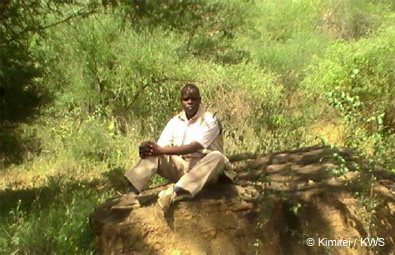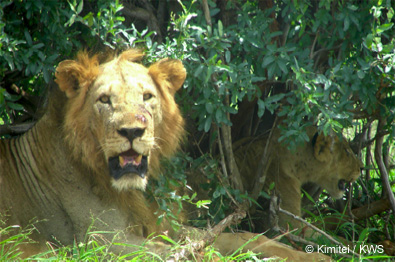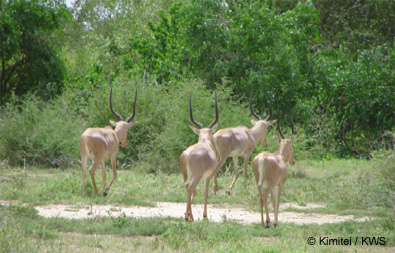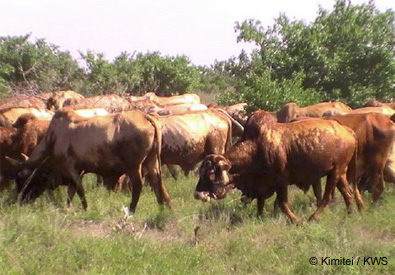Here EDGE Fellow Kimitei tells us more about some potential threats to the critically endangered hirola antelope, his focus species:
Tsavo East National Park has been hosting hirola since early 1960’s but their population has not shown a reasonable increase. This shows that hirola might be facing some up and downs in safeguarding their breath in every day. However, if the challenges had a high magnitude, then the population could have been wiped out. Maybe let us go through the possible threats facing the survival of the animal.
First, hirola is water independent animal, which shows their meat is sweet. This level of sweetness might expose them to predators and even humans. Hirola declines have been subjected to over predation by lions, cheetahs, leopards, hyena and jackals. So far, I have come across a pack of 11 lions and a cheetah. The lions had preyed on Buffalo and cheetah on impala. Thought the lions and cheetah were close to hirola groups but no sign of hirola predation due to no skulls found, sign of claw marks on hirola coat or injury caused through predation. However, predation will not be cut out in the hirola range.
Bush meat and related cases on hirola has not come across during my surveys and monitoring. However, most of the groups have moved far away from park boundaries, this might give an insight of the danger of bush meat incidences. It is necessary to note that two groups of hirola (unconfirmed) were sighted within ranches where bush meat is prone. Once the groups are confirmed and monitored, then, their trends might give information on bush meat.
Livestock in many ways can affect an animal population. Hirola is not an exception. Livestock intrusions will automatically displace a hirola group in a place. In areas with livestock incursions in Tsavo East where hirola was found to utilize before the incursions, no hirola have been found so far on the areas. This may be explained by resource (space, time and food) competition.
Inbreeding is another issue. Tsavo Hirola were introduced in 1963, but their population was thought to suffer inbreeding depression which led to injecting new blood to the population in 1996. The issue is in my mind when undertaking the monitoring.
See the next blog for more about this!!!
If you would like to support the conservation work of Kimitei, or other EDGE Fellows, then please become an EDGE Champion or donate here.



